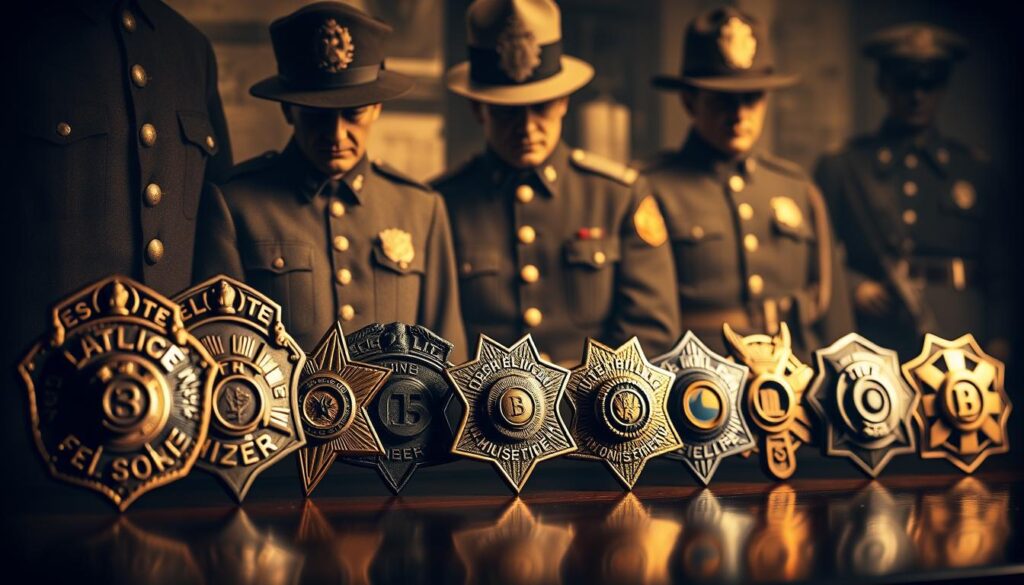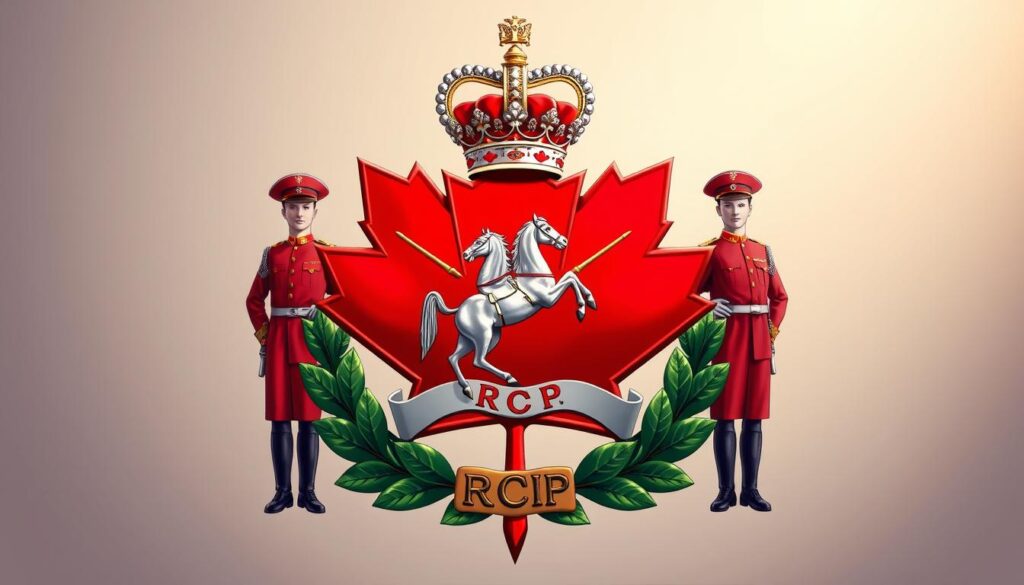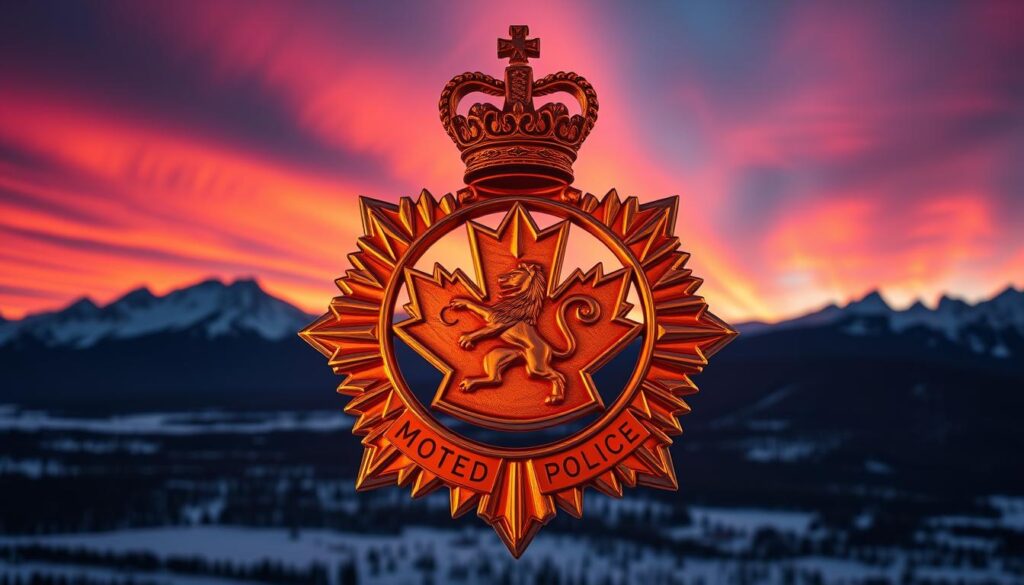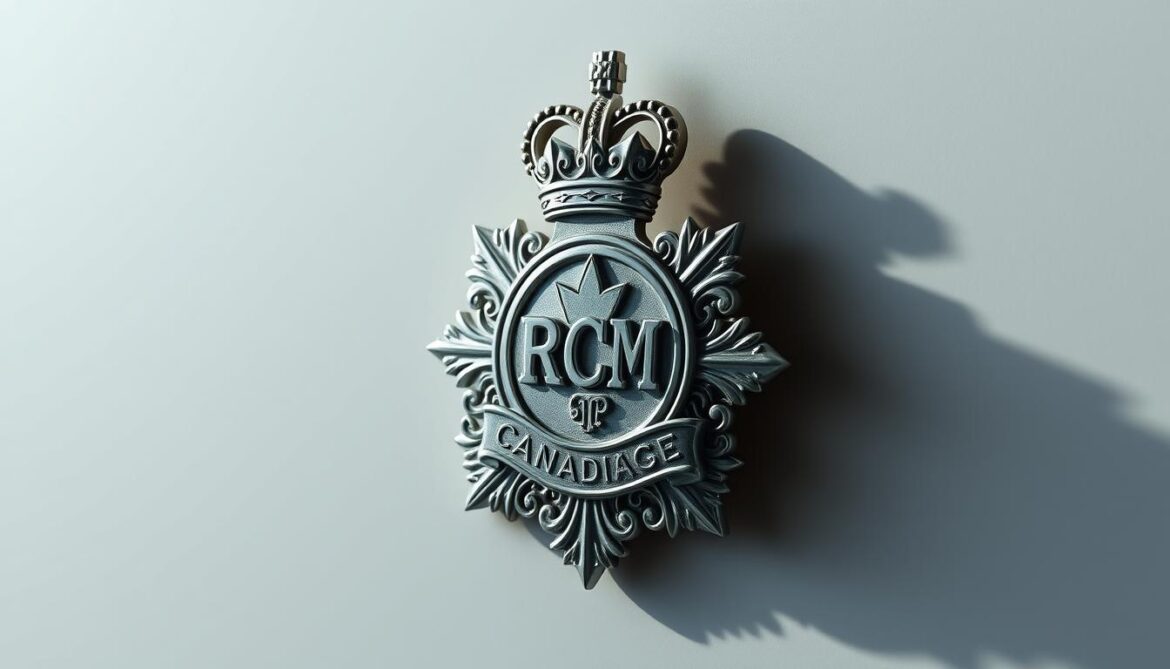Did you know the iconic law enforcement symbol worn today was designed over 145 years ago? Since the 1870s, this emblem has remained virtually unchanged, reflecting a legacy of stability in Canada’s approach to public safety. Its endurance mirrors the nation’s commitment to preserving order through evolving challenges.
Officially recognized in 2010 by the Canadian Heraldic Authority, the design features a bison’s head surrounded by maple leaves and crowned by royal symbolism. Each element represents core values: the bison signifies strength, while the Crown underscores constitutional governance. These details unite tradition with modern duty.
Beyond its visual impact, the badge serves as a tangible connection between officers and communities. You’ll notice it during patrols, investigations, and public events—a reminder of the service dedicated to preventing crime and fostering trust. Its presence reassures citizens while demanding accountability from those who wear it.
This emblem isn’t just metal and enamel. It embodies a promise to uphold justice across vast landscapes and urban centers alike. As you explore its history, you’ll uncover how a simple object became inseparable from Canada’s identity.
History and Evolution of the canadian mounted police badge
How did a frontier patrol symbol become an enduring national icon? The story begins with the harsh realities of 19th-century western expansion. Settlers faced lawlessness in remote territories, demanding organized protection.

Foundations in Frontier Justice
In 1873, the North-West Mounted Police formed to secure Canada’s western frontier. Their emblem first appeared three years later, blending British heraldry with local symbols. A bison head represented the wild landscape, while maple leaves hinted at emerging nationhood.
By 1904, royal approval transformed the force’s identity. King Edward VII granted the “Royal” title, marking new prestige. This change reflected evolving responsibilities beyond basic crime prevention.
| Period | Designation | Key Development |
|---|---|---|
| 1873-1904 | NWMP | Established frontier law enforcement |
| 1904-1920 | RNWMP | Royal designation added |
| 1920-Present | RCMP | National policing mandate |
Symbol of National Unity
The 1920 reorganization created the Royal Canadian Mounted Police we know today. Officers carried the emblem from Yukon to Nova Scotia, becoming mobile courts in isolated regions. As one historian noted: “Their badges weren’t just identifiers – they were portable authority.”
Through name changes and shifting borders, the emblem’s core elements remained constant. This consistency helped build public trust during Canada’s transition from colony to sovereign state. You can still see the original symbols in modern designs, connecting today’s officers to their storied past.
Design Elements and Symbolism
Every element of this law enforcement emblem tells a story about national values. Officially recorded in the public register of arms, its heraldic blazon specifies precise colors and shapes. This formal registration ensures its design remains protected as a permanent symbol of justice.

Blazon and Iconography of the Badge
The blazon describes a celestial blue circle with a bison head at its center. Golden letters circle the edge, bearing the motto “MAINTIENS LE DROIT.” Encircling maple leaves and a royal crown complete the design, each layer approved by heraldic authorities.
Meaning Behind the Maple Leaves, Crown, and Bison
Maple leaves frame the emblem, representing service to every province and territory. The Crown honors constitutional monarchy, reflecting the royal canadian institution’s role in governance. Below it, the bison recalls prairie landscapes where early patrols operated.
Motto: Upholding the Right and Legal Traditions
French text around the perimeter translates to “defend the law.” This motto guides daily operations, reminding wearers of their duty to fairness. Royal blue tones reinforce trust, a color long linked to global policing traditions.
Together, these elements form more than an rcmp badge. They visualize Canada’s balance between heritage and modern accountability. When you see this emblem, you witness centuries of legal tradition distilled into one unifying mark.
The MP Brand Legacy in Canadian Policing
What began as a simple mark on livestock became a cornerstone of national security identity. The MP brand evolved from practical frontier tool to enduring symbol of authority, adapting across centuries while maintaining its core purpose.

Historical Use and Evolution of the MP Brand
In 1874, officers started branding horses with “MP” to deter theft in remote regions. This unofficial practice became official when the north-west mounted force registered it in 1887 – one of Canada’s first law enforcement trademarks. The left shoulder branding helped citizens recognize patrols across vast distances.
By the 1920s, the mark appeared on ships and aircraft as duties expanded. Shabracks (saddlecloths) kept the tradition alive after live animal branding ended in 1950. Today, vehicle decals featuring the badges canada trusts replace physical marks, balancing heritage with modern ethics.
The brand’s longevity stems from its simplicity. Two letters conveyed instant recognition when officers worked alone in wilderness areas. As one archivist notes: “That MP stamp was often the only government presence settlers saw for months.”
From toboggans to helicopters, this identifier adapted to new challenges without losing its meaning. It remains a visual bridge between frontier justice and today’s community-focused crime prevention strategies.
Modern Role of Mounted Police in Canada
How does a 150-year-old emblem stay relevant in tackling cybercrime and community relations? Today’s mounted police balance historic symbolism with cutting-edge strategies. Over 30,000 members now deploy advanced forensics alongside neighborhood outreach programs, proving tradition fuels progress.

From Cyber Investigations to Cultural Events
You’ll find officers analyzing digital evidence one hour and mentoring youth the next. The service handles 800+ event requests annually, from home town fairs to international partnerships. Their iconic Musical Ride isn’t just spectacle—it’s diplomacy, connecting global audiences to Canadian values through precision horsemanship.
Legal Protections Meet Progressive Vision
Strict laws guard the rcmp badge against unauthorized use, ensuring public trust remains unbroken. This protection extends to digital assets, crucial as cybercrimes surge. Meanwhile, the force’s vision—“People first | Policing excellence | A safer Canada”—drives body camera adoption and trauma-informed training.
Registered in the public register of protected marks, the emblem now symbolizes AI-assisted patrols and Indigenous reconciliation efforts. It’s not about clinging to the past—it’s carrying forward timeless principles through methods that keep communities secure today.
Conclusion
For over a century and a half, this emblem has stood as a guardian of national values. Its design merges frontier history with constitutional principles, creating a symbol recognized from coast to coast. Every element—from the Crown’s authority to the bison’s resilience—tells Canada’s story.
The motto “MAINTIENS LE DROIT” still drives daily operations, anchoring modern policing in timeless ideals. You see its influence in community outreach programs and cybercrime units alike. What began on horseback now adapts to digital challenges without losing its core purpose.
Protected by law, the letters and imagery remain exclusive to those sworn to serve. This legal safeguard preserves public trust while honoring generations who wore the badge before. It’s not just metal—it’s a promise etched in heritage.
Through changing times, the Royal Canadian institution’s emblem reassures citizens while demanding excellence from its bearers. As badges Canada trusts, these symbols bridge past dedication with tomorrow’s peacekeeping vision.

